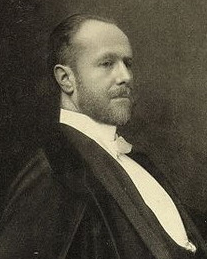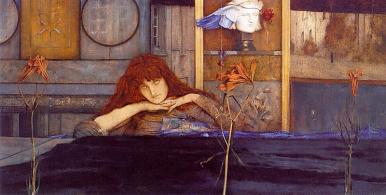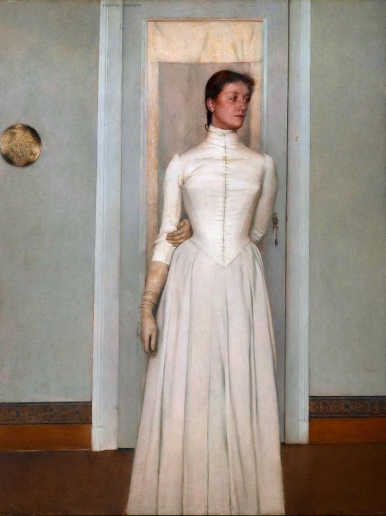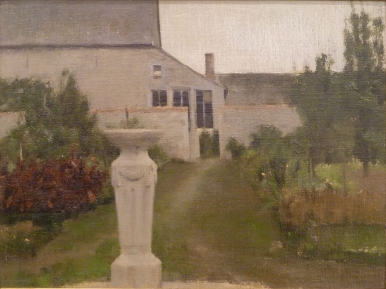
학력
1876년 브뤼셀왕립 예술 아카데미 미술 전공 학사
추가정보
Youth and Training
Fernand Khnopff was born to a wealthy family that was part of the high bourgeoisie for generations. Khnopff's ancestors had lived in Flanders since the early 17th-century but were of Austrian and Portuguese descent. Most male members of his family had been lawyers or judges, and young Fernand was destined for a juridical career. In his early childhood (1859-1864) he lived in Bruges where his father was appointed Substitut Du Procureur Du Roi. His childhood memories of the medieval city of Bruges would play a significant role in his later work. In 1864 the family moved to Brussels.
To please his parents he went to law school at the Free University of Brussels (now divided into the Universite Libre de Bruxelles and the Vrije Universiteit Brussel) when he was 18 years old. During this period he developed a passion for literature, discovering the works of Baudelaire, Flaubert, Leconte de Lisle and other mostly French authors. With his younger brother Georges Khnopff - also a passionate amateur of contemporary music and poetry - he started to frequent Jeune Belgique ("Young Belgium"), a group of young writers including Max Waller, Georges Rodenbach, Iwan Gilkin and Emile Verhaeren.
Khnopff left University due to a lack of interest in his law studies and began to frequent the studio of Xavier Mellery, who made him familiar with the art of painting. On the 25th of October 1876 he enrolled for the Cours De Dessin Apres Nature ("course of drawing after nature") at the Academie Royale des Beaux-Arts en Bruxelles. At the Academie, his most famous fellow student was James Ensor, whom he disliked from the start. Between 1877 and 1880 Khnopff made several trips to Paris where he discovered the work of Delacroix, Ingres, Moreau and Stevens. At the Paris World Fair of 1878 he became acquainted with the oeuvre of Millais and Burne-Jones. During his last year at the Academie in 1878-1879 he neglected his classes in Brussels and lived for a while in Passy, were he visited the Cours Libres of Jules Joseph Lefebvre at the Acad?ie Julian.
Early career with Les XX
In 1881 he presents his works to the public for the first time at the "Salon de l'Essor" in Brussels. His work is acclaimed very critically by the press with the exception of Emile Verhaeren who writes a commending review. Verhaeren would remain a lifelong supporter and would write the first monography of the painter. In 1883, he was one of the founding members of the group Le Groupe des XX. Khnopff exhibited regularly at the annual "Salon" organised by Les XX. In 1885 he met the French novelist Jos?hin P?adan the future grandmaster of the Rosicrucian "Ordre de la Rose + Croix". P?adan asked Khnopff to design the cover for his new book "Le Vice supr?e". Khnopff accepted this commission but destroyed the work later because the famous soprano Rose Caron was offended by the imaginary portrait of Leonora d'Este that Khnopff had designed to adorn the cover and in which Caron believed to recognise her own face. The vehement reaction of "La Caron" on this occasion made a scandal in the Belgian and Parisian press and would help to establish Khnopff's name as an artist. Khnopff continued to design illustrations for the works of Peladan, most notably for "Femmes honnetes" (1888) and "Le Panthee" (1892). On several occasions (1892, 1893, 1894 and 1897) Khnopff was invited as guest of honour on the exhibitions of the Parisian "Salon de la Rose + Croix" organised by Peladan.
Mature Years
In 1889 Khnopff laid his first contacts with England where he would stay end exhibit regularly in the future. British artists such as Hunt, Watts, Rossetti, Brown and Burne-Jones would become friends. From 1895 Khnopff worked as a correspondent for the British art journal "The Studio". Until the outbreak of World War I in 1914 Khnopff would be responsible for the rubric "Studio-Talks-Brussels" in which he reported about the artistic evolutions in Belgium and continental Europe. In March 1898 Khnopff presented a selection of 21 works on the first exhibition of the Vienna Secession. In Vienna his work was received with massive admiration. The works he presented at the Secession would form a major influence on the oeuvre of Gustav Klimt.
From 1900 onwards Khnopff is engaged in the design of his new home and studio in Brussels (demolished). The house was inspired by the Vienna Secession and more in particular by the architecture of Joseph Maria Olbrich. To the sober architecture and decoration Khnopff added a highly symbolic, spatial and decorative concept that turned his home into a "Temple of the self". The house functioned as a shrine in which the genius of the painter could flourish. His motto "On a que soi" (=One has but oneself) was inscribed above the entrance door, in and his studio he painted in the middle of golden circle inscribed on the white mosaic floor. This almost theatrical setting was undoubtedly a reflection of Khnopffs passion for theatre and opera. Khnopff's first designs for the theatre date from 1903 when he sketched the sets for a production of Georges Rodenbach's play "Le Mirage" at the Deutsches Theater Berlin. This production was directed by the famous Max Reinhardt, and the sets evoking the gloomy streets of the mysterious city of Bruges where Khnopff had spent his early childhood, were much appreciated by the Berlin public and critics. After Khnopff had been engaged to design the costumes and the sets for the World premiere of Ernest Chausson's opera Le Roi Arthus at the Th羽tre Royal de la Monnaie in Brussels in 1903, he collaborated on more than a dozen opera productions given at "La Monnaie" in the following decade[5]. In 1904 the city council of Saint Gilles commissioned him to decorate the ceilings of the "Salle des Marriages" (=Wedding Room) of the new Town Hall, and in the same year he was approached by the wealthy banker Adolphe Stoclet to design decorative panels for the music room of the Palais Stoclet. Here Khnopff came in touch again with prominent artists from the Vienna Secession; the architect of the Palais Stoclet Josef Hoffmann, and Gustav Klimt who had designed a decorative mosaic for its dining room.
Although not a very open man and a rather secluded personality, he already achieved cult status during his life. Acknowledged and accepted, he received the Order of Leopold. His sister, Marguerite, was one of his favorite subjects. His most famous painting is probably The Caress ("L'Art ou Des Caresses"). His art often portrayed a recurring theme found in symbolist art: the dualistic vision of woman as either 'femme fatale' or angelic woman.




